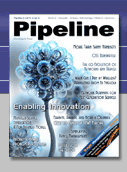|
|

article page
| 1
| 2
| 3
| 4
| 5
| 6
| 7
| 8
|
slaved or otherwise servicing devices. It may become both feasible and efficient to move service control points from their traditional location in the network down into smart devices.
It may also be efficient to have these smart devices proxy management functions for the local mesh. This would involve downloading a manager into the smart device. Even if the mesh group to which the device is a member is a logical mesh using remote connections, a single device could be nominated to broker management for some or all of the mesh. Obviously, we are way beyond the old manager/agent model. Still, this could be leveraged by providers to both solve device management issues and derive revenue. Someone will step up to provide these services as soon as others are ready to pay for solutions to management or security needs.
It is unlikely that just inventing another protocol, as the ITU and the ITEF do, will address any of these problems. Nor will creating new eTOM processes do it; not even creating additional new services such as with the OMTP – Open Services Initiative. A new vision leading to a new architecture is needed.
The Ship of Our Dreams
The TMForum is searching for a framework for device management. Any framework must address the requirements and goals of existing approaches. It must also encompass the plurality of existing solution approaches, the standards and architectures of the historically different device classes. But as these different device classes come to interact with each other (for example the user, mobile phone, and ticket kiosk interacting in a purchase), the framework must subsume all the pluralities not as isolated domains, but as open systems. When we re-use existing approaches, we must avoid the traditional myopia of the SP-in-the-middle.
Picking the right reference image will be important. It cannot be a network centric framework like the expanding rings of device classes. All the existing approaches from the ITU, DFTF, OSGi etc. are network centric. Yet, it would be costly and time consuming to throw these out and start over, so we need to live with and reconcile many different models. This requires using a collaborative architectural approach, built into the Framework. It probably means giving up on the demand for rigorously consistent, all encompassing information data models like the TMForum SID or the DMTF CIM. Using logical groupings of devices to segment the problem space might work if there were a good way to resolve the intra group interactions, provided the network centric viewpoints are purged from them all.
|
|
Convergence is occurring and must accelerate.
|
|


Apple iTunes currently manages iPhone configurations and the Apple store exclusively sells loadable services. Even if the technical need did not exist, the market is driving this direction. On-board agents are also in evidence. In an autonomous function, the iPhone checks Apple for authorization before an application is allowed to load. The phone software enforces Apple policy of "Apple as only service provider."
Devices are evolving in capabilities and any framework must be flexible and adaptable in order to adjust. While Android will start as a mobile OS, Google intends to enhance it into a universal operating system for smart homes (controllers and set-top boxes for televisions) and personal devices (cameras and mp3 players). Indeed, speculation by Internet co-creator Vint Cerf is that Android will subsume other communication, media devices, and services. "In an internet enabled world, there is no reason that a projector could not be online and downloading images, maybe using the Blackberry as a control device. Surrounded by networked equipment that is reachable anywhere, devices harnessed on a temporary basis to do something for you and then released. I am predicting that during this decade, we will see more systems interacting with other systems like this." VentureBeat is sure Google wants to create an ecosystem that autonomously supports communication between any two devices. Similarly, Microsoft desires to connect all your devices with its Live Mesh platform.
Any new Device Management Framework must provide an overall vision to replace the network centric, single network attached illustrations of the past. It must provide an information model that links devices & services; fortunately, a good start to this exists in the TMForum SID. Still, the DMTF Broadband Forum TD series, the IETF, and the OSGA must all be reconciled into the SID or be brokered in translations by a semantic mediation product like Progress Software's DataExtend. Any model must provide for ownership and for identity management (of devices) and allow for multi-network, multi-provider, and inter-device recognition. It will need to future proof with RDF and w3C approaches, including work on the semantic web. In the meantime, the framework needs to operate in a technology specific environment of ESB and other SOA approaches.
A critical distinction can be made between devices that have people attached to them and those that just react with the network and the physical world. We can model the
article page
| 1
| 2
| 3
| 4
| 5
| 6
| 7
| 8
| |
|
|
|

|
|
|



